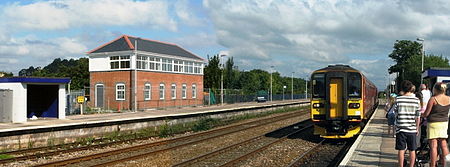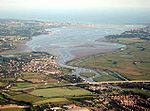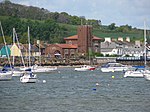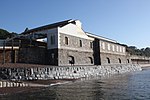Dawlish Warren railway station
1912 establishments in EnglandDawlishDfT Category F2 stationsFormer Great Western Railway stationsPages with no open date in Infobox station ... and 7 more
Railway stations in DevonRailway stations in Great Britain closed in 1917Railway stations in Great Britain opened in 1912Railway stations in Great Britain opened in 1919Railway stations on the South West Coast PathRailway stations served by Great Western RailwayUse British English from September 2017

Dawlish Warren railway station serves the seaside resort and holiday camps of Dawlish Warren in Devon, England; it is located at the mouth of the River Exe. The station is on the Exeter to Plymouth line, 10 miles 46 chains (17.0 km) down the line from Exeter St Davids and 204 miles 37 chains (329.1 km) from London Paddington via Box. From here to Teignmouth, the South Devon Railway sea wall runs alongside the Riviera line railway.
Excerpt from the Wikipedia article Dawlish Warren railway station (License: CC BY-SA 3.0, Authors, Images).Dawlish Warren railway station
Station Road, Teignbridge
Geographical coordinates (GPS) Address Nearby Places Show on map
Geographical coordinates (GPS)
| Latitude | Longitude |
|---|---|
| N 50.5994 ° | E -3.4437 ° |
Address
Dawlish Warren Golf Club
Station Road
EX7 0RD Teignbridge
England, United Kingdom
Open on Google Maps










